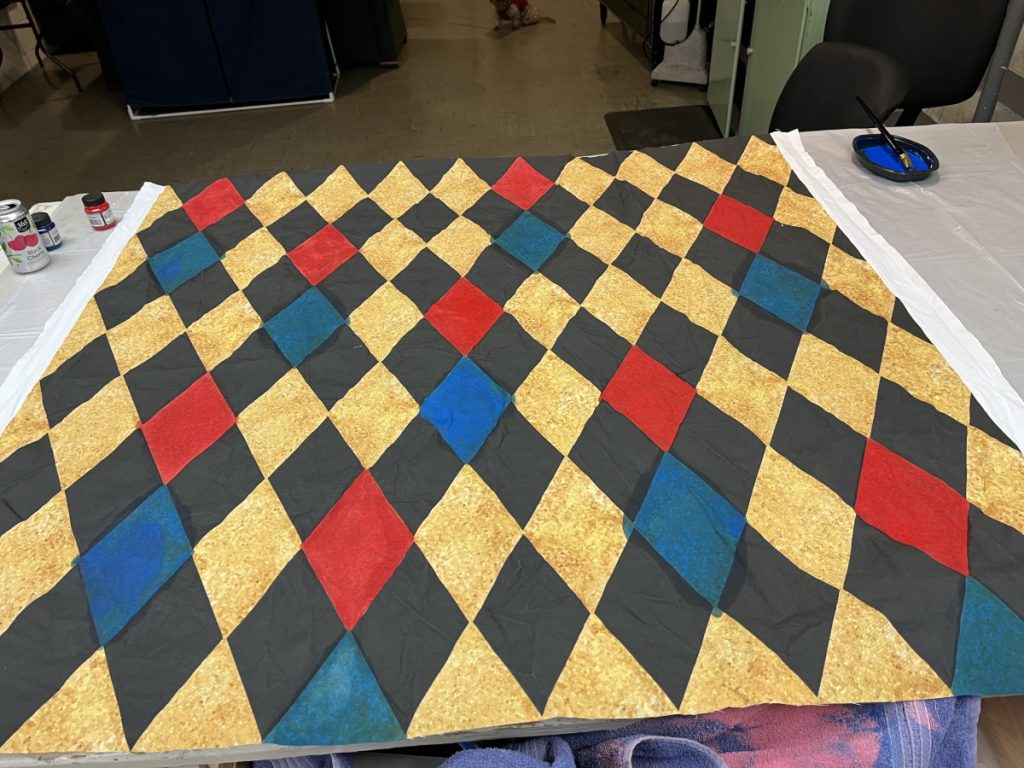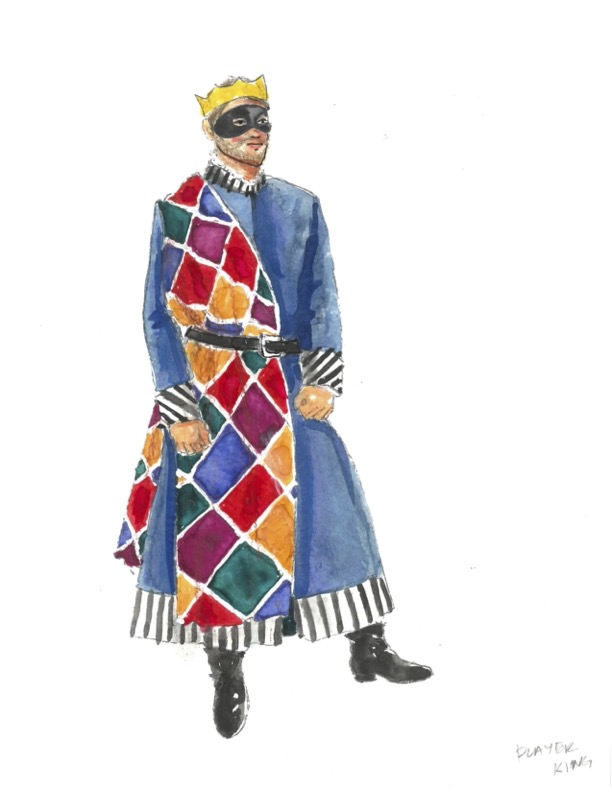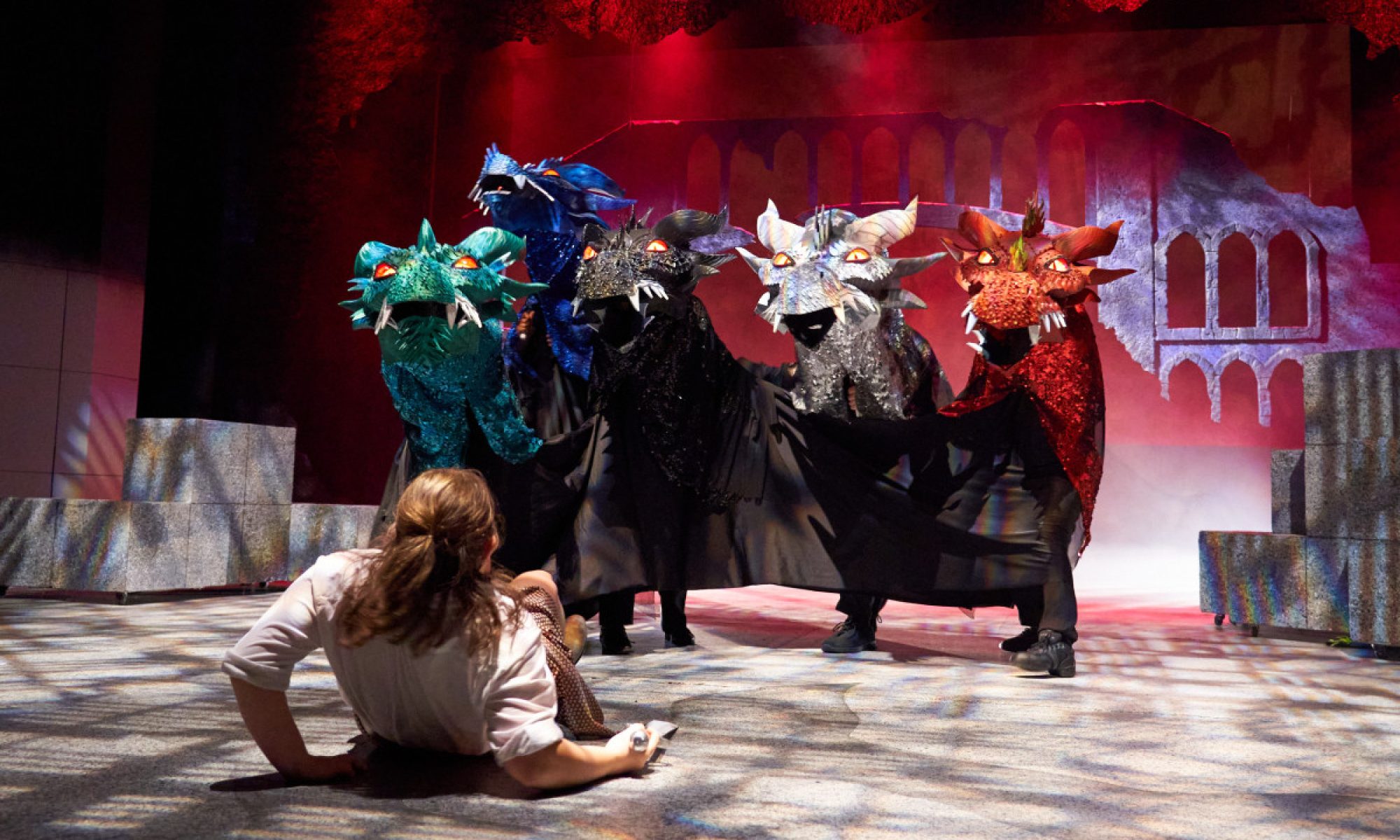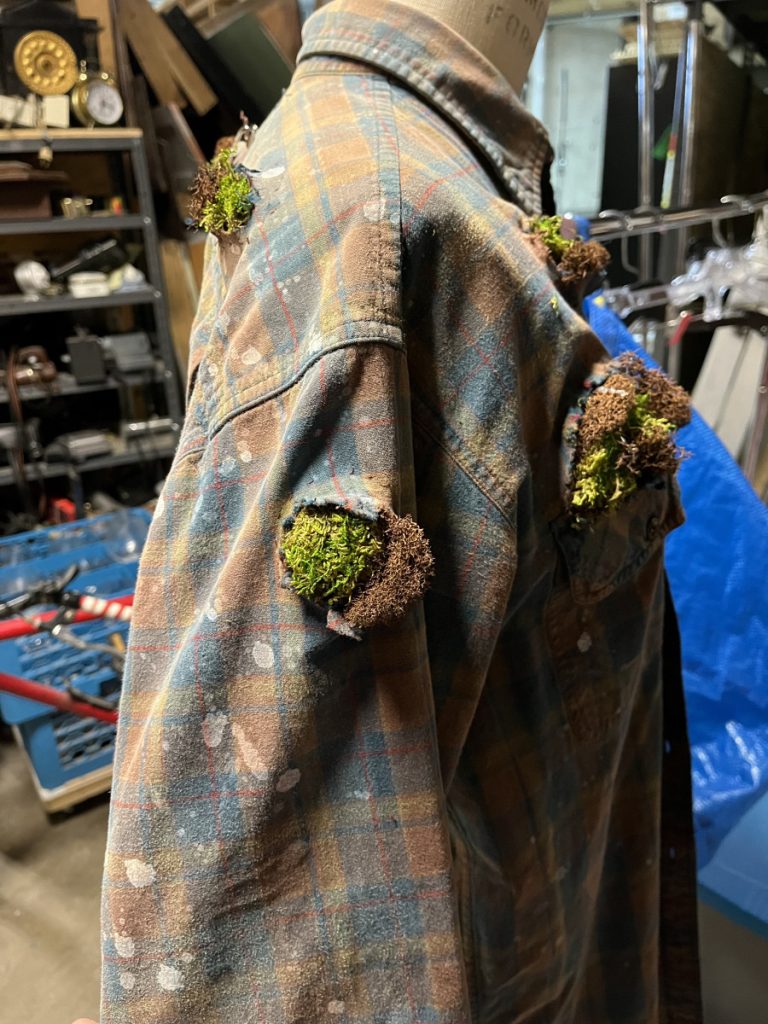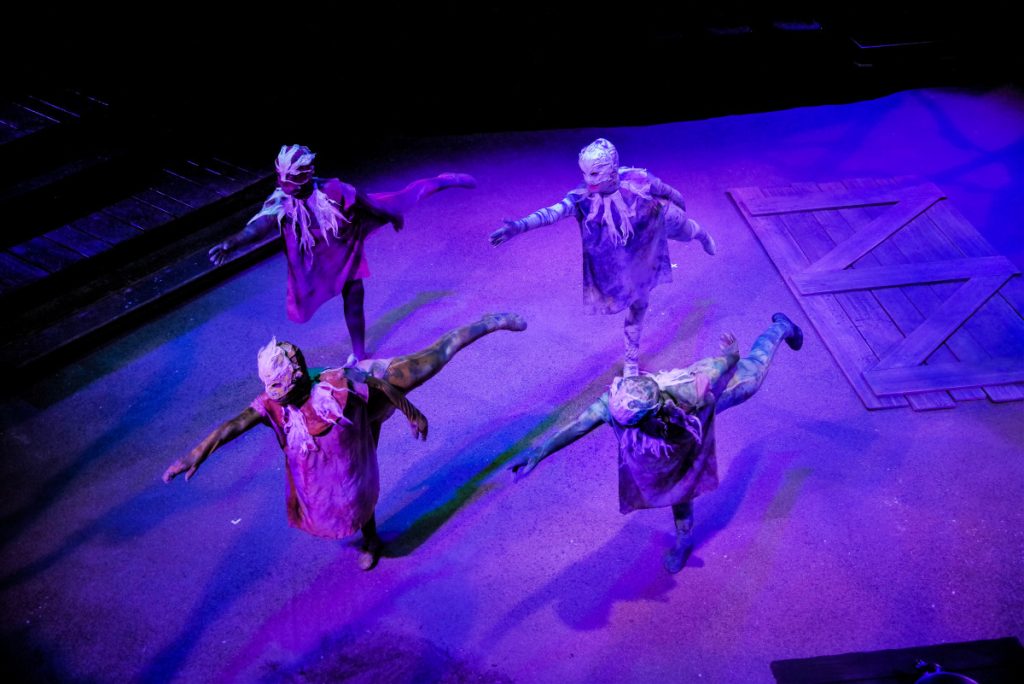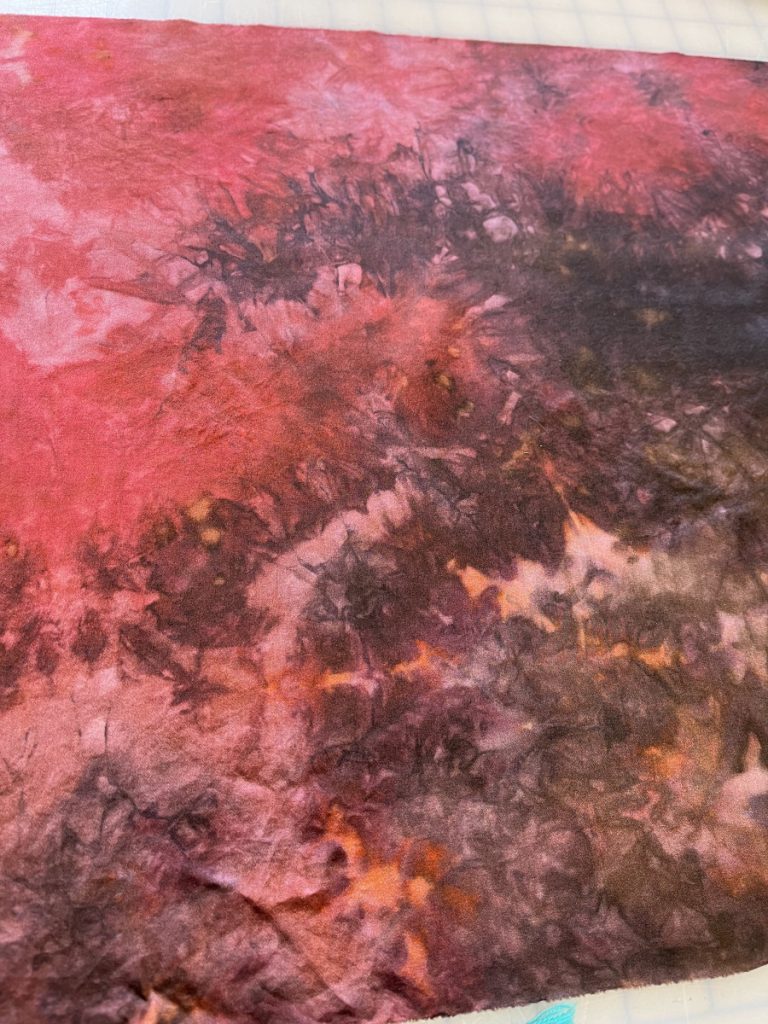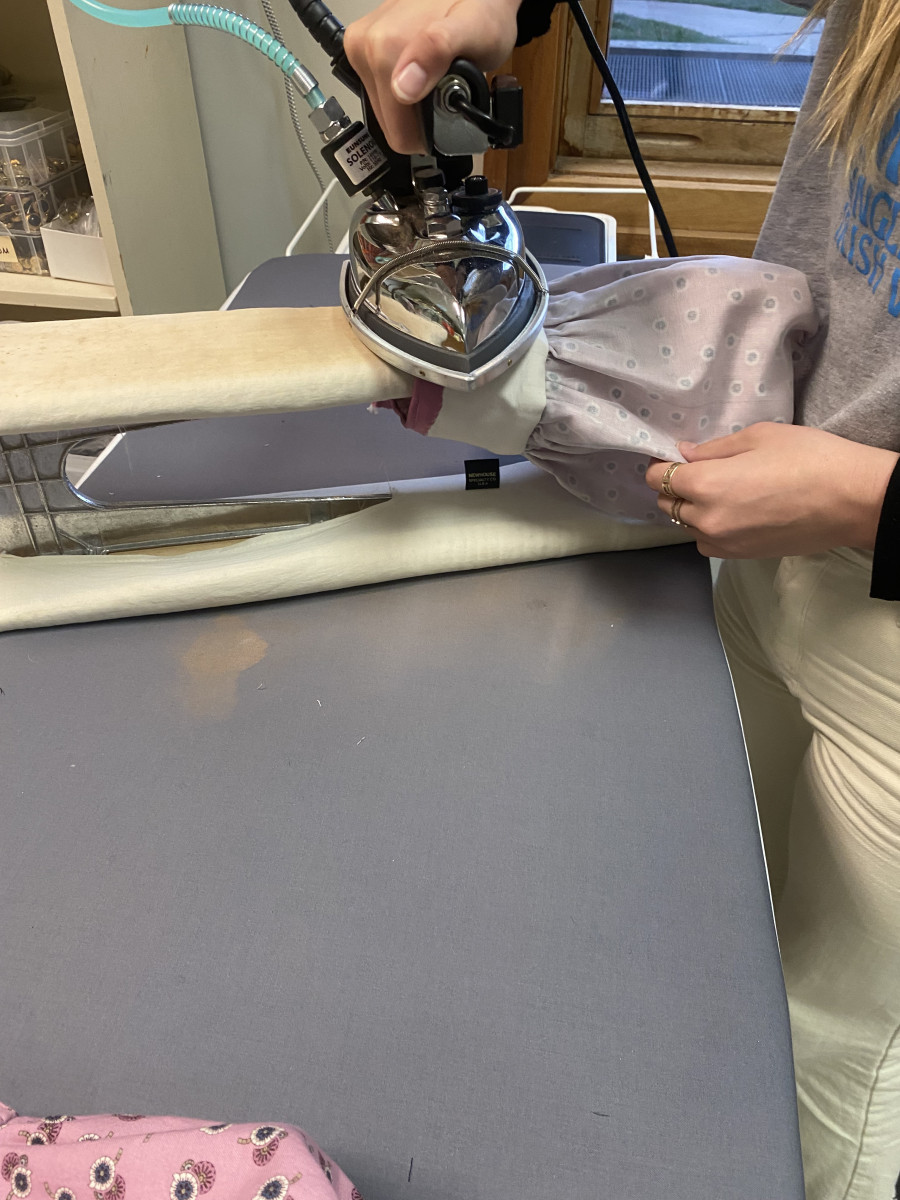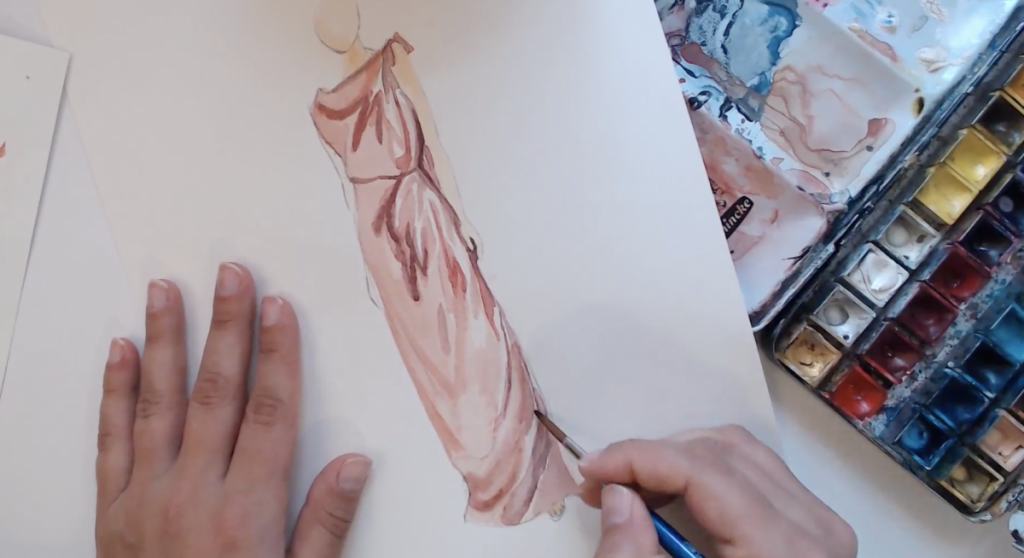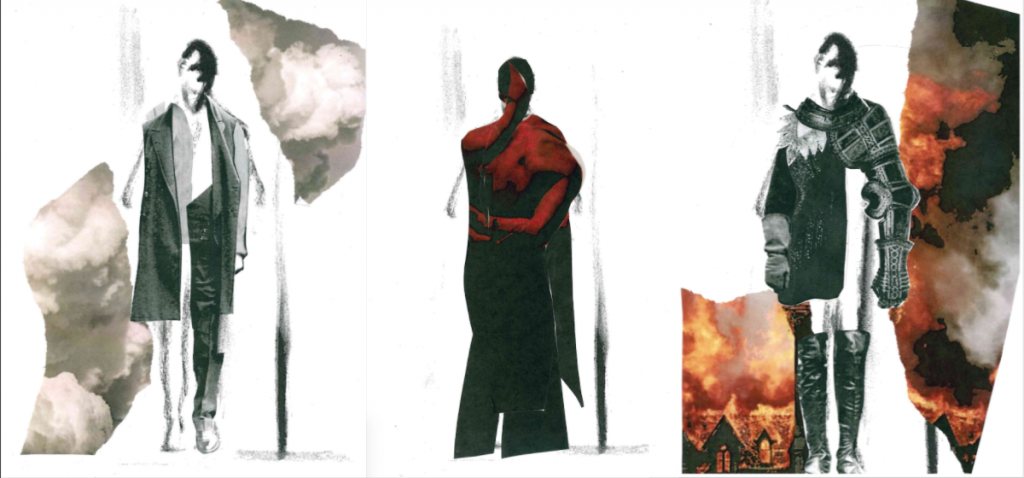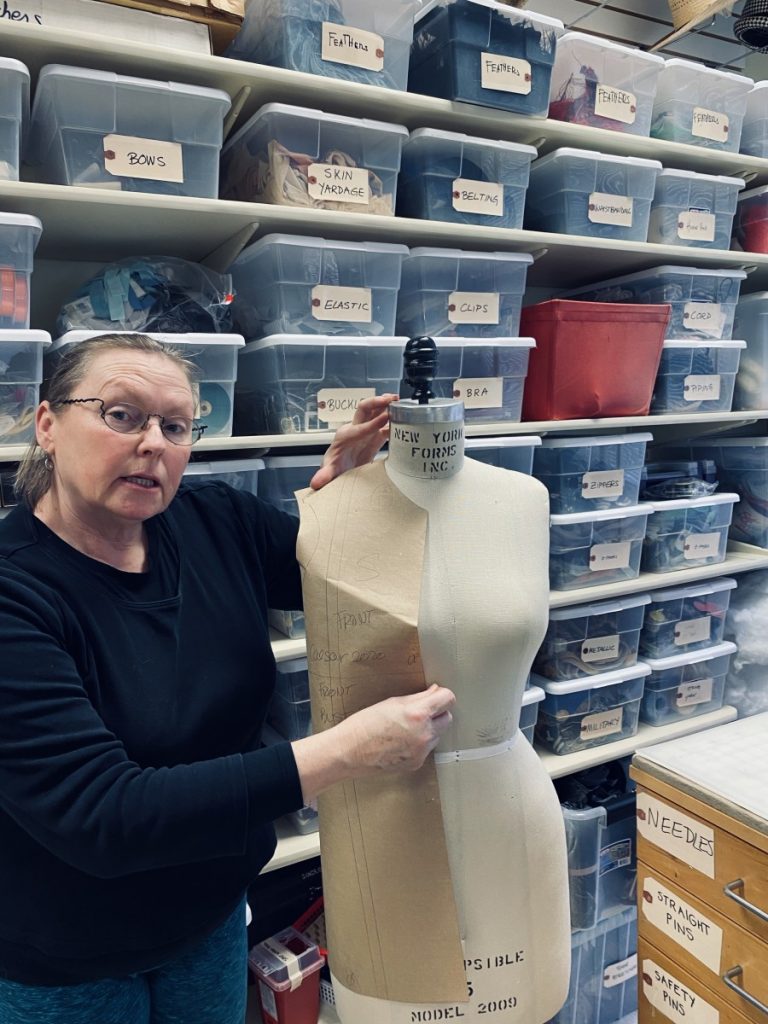For the Players in Hamlet for the Play within a Play scene the costumes were inspired by traditional commedia dell’arte costumes to add some playfulness to these scenes. inspired by the colorful patterns and historic shapes the costume shop really rose to the challenge of creating some 18th century style costumes that could be quick changed on and off very quickly for the changing nature of this piece where all 10 actors are constantly changing roles. We ordered custom diamond patterned fabric from Spoonflower and painted with Jacquard textile paint onto the fabric to give it a custom look to add more color to the pattern. If you can’t find what you want sometimes you have to customize it to make it just right for the characters.

